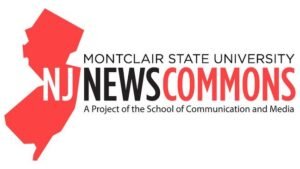School Board Approves Racial Equity Plan

It was not unanimous, but the Board of Education on February 25 approved a four-year plan designed to attack systemic racism in the district.
The plan is an outgrowth of the board’s anti-racism policy and 2021 goals – which addressed eradicating White supremacy in the township – adopted in the summer of 2020.
As she did then, Board member Pat Stanley voted against the equity plan, saying that its language was “too political.”
The plan sets four over-arching goals and a number of benchmarks to reach them, spread over the school years from 2020-21 to 2023-24.
The main goals are:
- Increase the awareness of systemic racism and inequities that exist in our school community.
- Develop a culturally and linguistically responsive (CLR) mindset that enables individuals and organizations to recognize the implications of race and equity on all aspects of teaching, learning, and leading.
- Develop a shared understanding of the research-based strategies to increase equity in all school environments.
- Create a nurturing school environment where stakeholders feel personally welcomed, accepted, respected, included, and supported by school staff members in the school social environment.
Among the benchmarks for meeting the first goal over the course of the next four years are: Provide and structure opportunities for students to share their personal experiences with systemic racism and inequities; critically examine each curriculum to determine whether it reinforces negative cultural stereotypes; establish and sustain a school community that shares the collective responsibility to address, eliminate, and prevent actions, decisions, and outcomes that result from and perpetuate racism, and establish and sustain a school community that shares the collective responsibility to address, eliminate, and prevent actions, decisions,
and outcomes that result from and perpetuate racism.
Benchmarks for the second goal, spread over four years, include: Respond and interact effectively with people who differ racially, linguistically, and culturally; improve teaching, learning, programs, and services and ask students to provide feedback indicating the learning activities that are
effective in helping them to learn; ensure all students complete their education prepared for success in college, career, and community, and monitor progress in all areas identified above and revisit areas that may still need collective focus.
Benchmarks for the third goal, spread over four years, include: use instructional practices that recognize the potential for bias in special education identification and which support research-based
instructional practices; involve community members by recognizing the expertise of parents and community members and creating partnerships with parents to support learning; use instructional practices that enable teachers to provide all students with the support they need, and use instructional practices that provide all students with access to the whole curriculum.
Benchmarks for the fourth goal, spread over four years, include: create a nurturing school environment where stakeholders feel personally welcomed, accepted, respected, included, and supported by school staff members in the school social environment by increasing the percentage of students who feel a sense of belonging in school by obtaining information regarding students’ academic interests and weaknesses; foster a school culture and climate that centers student voices and affords students agency by creating a structure that helps students identify trusted adults, and monitor progress in all areas identified above and revisit areas that may still need collective focus.
The plan’s seventh and last page lists 27 equitable teacher behaviors, including welcoming students by name as they enter the classroom, using a variety of visual aids and props to enhance learning, and acknowledging all students’ comments, responses, questions, and contributions.
The four-year benchmarks lead “you to the inference that there will be action plans built around each of these goals and each of these years, and that’s what the sub-committees of the district-wide team will do, they’ll build action plans around each of the major points and each of the goals put forth in the multi-year plan,” schools Superintendent John Ravally said.
The plan, he said, “Really was the result of a number hours of work. They worked directly with the consultant to create the plan, talked with students, talked with teachers, talked with families … to make sure that we truly crafted a plan to meet the needs of our students.”
Assistant Superintendent Dan Loughran, who led the endeavor, said the plan was a “district-wide, administrator and teacher-led effort.”
Loughran created a screen cast to describe the program. The screen cast is available on the district’s web site.
In response to a question from Board member Ed Potosnak, Loughran said that being anti-racist is not a passive effort.
“Simply not being racist is not the same as being anti-racist,” he said. “If you’re anti-racist, you see the injustice, you see the micro-aggressions, you … take courage and say something about it, you do something about it, you actively seek to dismantle racism that’s all around us.”
“So if you’re anti-racist, you’re pro-America,” Loughran said.
In casting her “no vote, Stanley said she was voting that way “due to its over and above verbiage in terms of political terms, if we were to follow just the items that are on page seven, our students in Franklin Township would … (have) … a more relaxing and uplifting school experience, in my opinion.”
Ravally said the “next steps include the development of action plans aimed to create system-wide change that will further promote equitable opportunities for the children who attend our schools.”
“We have yet a lot of work to do, but this provides really good direction,” he said.























































